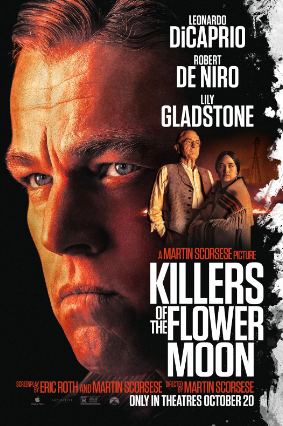
Acclaimed American director Martin Scorsese’s most recent film, “Killers of the Flower Moon,” tells the story of the Osage Indian serial murders that took place in Osage County, Oklahoma from 1918 to 1931, where over 60 Osage Native Americans were killed. The film made its premiere on May 20 at the 76th Cannes Film Festival and was released to the public in the United States on Oct. 20.
The film’s projected box office profit was roughly $200 million, which was considerably less than expected by producers. Some complained that the film was too long, however, the reception of it was generally positive.
“Even after sitting through a movie that was longer than ‘Titanic,’ the crowd was so enraptured that they sprang to their feet and applauded for nine minutes.” Variety writer Ramin Setoodeh said in an article.
The story was modeled around David Grann’s “Killers of the Flower Moon: The Osage Murders and the Births of the FBI” and Dennis McAuliffe’s “The Deaths of Sybil Bolton.” It’s safe to say the film was inspired by both books, essentially making the film a tale of systematic complicity through the federal investigative services at the time, and not injustice.
“[I]n this American tragedy, there was no real justice and no real catharsis,” writer for New York Times Margo Jefferson said. “Three low-level assassins served prison terms for the murder of three Osages and two of their white allies. The rest of the victims died unavenged, and the rest of the murderers lived and died unpunished.”
In the past, filmmakers have cast white actors to play Native American characters, inaccurately depicting countless stories, and silencing Native American people in their self-expression through art and visual media. However, Scorsese attempted to turn over a new leaf with various efforts to showcase the true story.
“This was an amazing experience,” Scorsese said at the first showing of the film at the Cannes Film Festival in May. “We lived in that world.”
Assuming that Scorsese’s purpose in creating the film was to tell the story in a fashion that honored the Osage people and handed them power, a discreet and perhaps unintentional failure in his execution was telling the series of events from the perspective of one of the white conspirators.
“To me, the Indians [in the film], like those in countless other Westerns, were mere shadow characters,” writer Christine Vestal of Osage descent said in an article with Politico. “Undeveloped, barely speaking and never understood.”
Considering the way the film was produced in contrast to the real story, it is important to recognize the effects that the film has on its audience. Instead of spreading awareness about the unavenged victims of the Osage murders, the film dwindles the true story down to a case of human nature.
“That shift [from telling the true story from an unbiased point of view, to telling the story from the point of view of one of the white conspirators] makes it a much more personal story…one that fleshes out the story to ground an exploration of human nature, weakness and greed.” Deadline writer Mike Fleming Jr. said.



